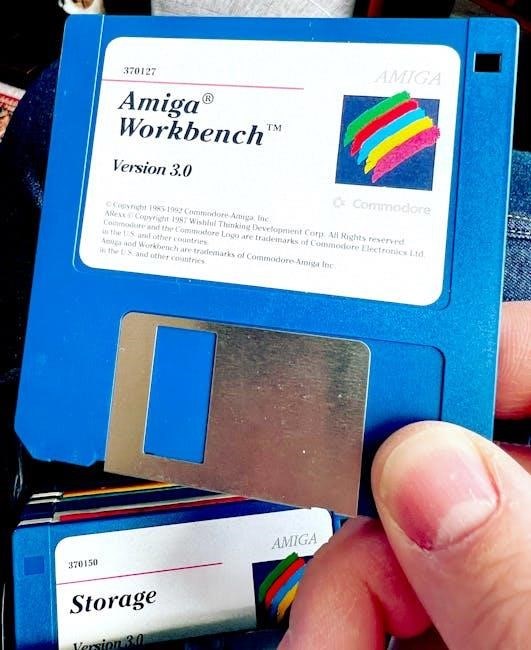MSC Euribia, launched in 2023, is MSC Cruises’ second LNG-powered ship, featuring cutting-edge sustainability, innovative amenities, and luxurious accommodations for over 6,000 guests across 19 decks.
1.1 Overview of MSC Euribia
MSC Euribia, launched in 2023, is MSC Cruises’ second LNG-powered ship, offering a luxurious cruising experience. With 19 decks, it accommodates over 6,000 guests, featuring modern amenities, family-friendly entertainment, and sustainable practices. Its deck plans reveal a thoughtfully designed layout, combining comfort and innovation for unparalleled voyages.
1.2 Key Features of the Ship
MSC Euribia boasts LNG fuel for sustainability, advanced interactive touchscreens, and MSC for Me app integration. It features the luxurious MSC Yacht Club, extensive entertainment options, and family-friendly activities. The ship offers diverse dining venues, a grand Galleria Euribia shopping area, and modern cabin designs, ensuring a memorable cruising experience for all passengers.
1.3 Sustainability and Innovation
MSC Euribia pioneers sustainability with LNG fuel, reducing emissions. It features energy-efficient systems and advanced waste management. Innovative amenities include interactive touchscreens, smart TVs, and the MSC for Me app, enhancing guest experiences through digital solutions and seamless connectivity onboard, aligning with modern eco-friendly and technological advancements in cruising.
Deck Plans and Layouts
MSC Euribia features 19 decks with 2,419 cabins and 6,327 guest capacity. Public areas include pools, shopping gallerias, and MSC Yacht Club. Interactive deck plans and color-coded cabin categories help guests navigate and choose accommodations seamlessly.
2.1 Detailed Deck Plan Overview
MSC Euribia features 19 decks, with 2,419 cabins and a capacity for 6,327 guests. Key public areas include the Luxury Plaza on Deck 6, Pool Deck with sunbathing zones, and MSC Yacht Club on higher decks. Interactive deck plans highlight cabin locations, with color-coded categories for easy navigation and selection.
2.2 Public Areas and Facilities
MSC Euribia offers extensive public areas, including the Galleria Euribia shopping gallery, expansive pool decks with sunbathing zones, and the exclusive MSC Yacht Club with private sundecks. Entertainment venues, dining areas, and recreational facilities are strategically located across multiple decks, ensuring a vibrant and accessible cruise experience for all passengers.
2.3 Cabin Categories and Locations
MSC Euribia features 2,419 cabins across various categories, including suites, balconies, ocean views, and interiors. Cabins are strategically located on multiple decks, with suites and premium accommodations offering exclusive access to the MSC Yacht Club, while family-friendly options are clustered in convenient, accessible areas for enhanced comfort and convenience.
Cabins and Accommodation
MSC Euribia offers 2,419 modern cabins, accommodating up to 6,327 guests. From cozy interiors to luxurious suites, the ship provides diverse accommodations, ensuring comfort and style for all passengers.
3.1 Types of Cabins Available
MSC Euribia offers a variety of cabin types, including interior, oceanview, balcony, and luxurious suites. The ship also features MSC Yacht Club cabins, providing exclusive amenities. Cabins are designed for comfort, with flexible bedding options to accommodate couples, families, or groups of up to four passengers.
3.2 Cabin Amenities and Services
MSC Euribia cabins feature modern amenities like interactive touchscreens, smart TVs, and complimentary access to the MSC for Me app. Guests enjoy 24/7 room service, Wi-Fi, and elegant furnishings. Suites and MSC Yacht Club cabins offer exclusive concierge services, private lounges, and priority access to ship facilities, enhancing the luxury experience.
3.4 Cabin Size and Configuration
Cabins on MSC Euribia range in size from 17 square meters, accommodating 2 to 4 guests. Configurations include interior, ocean view, balcony, and suite options, with amenities like smart TVs and interactive touchscreens. Suites offer spacious layouts with exclusive access to MSC Yacht Club perks, ensuring a luxurious and comfortable stay.

Public Areas and Facilities
MSC Euribia features expansive public areas, including the luxurious Galleria Euribia, pool decks with sunbathing zones, and the exclusive MSC Yacht Club with private lounges and sundecks.
4.1 Galleria Euribia and Shopping Areas
Galleria Euribia offers a luxurious shopping experience with duty-free shops, high-end boutiques, and a brand-new Luxury Plaza on Deck 6. Guests can explore a variety of retail options, from designer fashion to exclusive jewelry, making it a premier shopping destination at sea.
4.2 Pool Deck and Sunbathing Areas
MSC Euribia features expansive pool decks, including the main pool area on Deck 18 and a sunbathing zone on Deck 16. Guests can relax in whirlpools, enjoy poolside bars, or unwind on comfortable loungers. The MSC Yacht Club also offers an exclusive Sun Deck for suite guests, providing a private retreat with stunning ocean views.
4.3 MSC Yacht Club and Exclusive Lounges
MSC Yacht Club on MSC Euribia offers an exclusive retreat on Deck 16, featuring a private Sun Deck, observation lounge, and dedicated bar. Guests enjoy personalized service, luxurious amenities, and breathtaking ocean views, creating a unique and privileged experience tailored to discerning travelers seeking ultimate comfort and privacy.
Dining and Entertainment
MSC Euribia offers diverse dining venues, including specialty restaurants, buffets, and fine dining options. Entertainment features live shows, themed events, and family-friendly activities, ensuring memorable experiences for all guests.
5.1 Restaurants and Dining Options
MSC Euribia features a variety of dining venues, including fine dining restaurants, international buffets, and specialty eateries. Guests can enjoy gourmet cuisine at the Luxury Plaza on Deck 6, savor seafood, steak, and Italian dishes, or explore global flavors in casual and elegant settings catering to all tastes and preferences.
5.2 Bars and Nightlife Venues
MSC Euribia offers a vibrant selection of bars, from the elegant Champagne Bar to the lively Pool Deck bars. The MSC Yacht Club features exclusive lounges, while themed parties and live music venues ensure unforgettable nights. Guests can enjoy craft cocktails, wine, and entertainment in stylish settings across the ship.
5.3 Entertainment Activities and Shows
MSC Euribia offers diverse entertainment, including Broadway-style theater productions, live music performances, and interactive events. Families enjoy LEGO and Guinness World Records activities, while themed parties and dance shows cater to all ages, ensuring a vibrant and engaging experience for every guest onboard.
Family-Friendly Features
MSC Euribia offers family-friendly amenities, including kids’ clubs, family cabins, and entertainment for all ages, such as LEGO and Guinness World Records events, ensuring fun for everyone.
6.1 Kids’ Clubs and Activities
MSC Euribia features dedicated kids’ clubs divided by age, offering interactive games, creative workshops, and themed activities. The ship also hosts LEGO and Guinness World Records events, providing engaging entertainment for children while parents relax, ensuring a fun and memorable family cruise experience for all ages onboard.
6.2 Family-Friendly Cabin Options
MSC Euribia offers family-friendly cabins accommodating 2 to 4 guests, with flexible bed arrangements and modular furniture. These spacious staterooms are strategically located for easy access to kids’ clubs and family entertainment areas, ensuring comfort and convenience for families of all sizes.
6.3 Family Entertainment and Events
MSC Euribia offers a variety of family-friendly entertainment, including Guinness World Records events, LEGO® activities, and interactive shows. Themed parties and live performances ensure fun for all ages, while kids’ clubs provide tailored experiences, making every family cruise memorable and engaging.

Technological Features
MSC Euribia integrates interactive touchscreens, smart TVs, and the MSC for Me app, offering seamless navigation, booking, and real-time ship updates for enhanced guest convenience and connectivity.
7.1 Interactive Touchscreens and Smart TV
MSC Euribia features interactive touchscreens throughout the ship and in-cabin smart TVs, enabling guests to navigate deck plans, book services, and access real-time updates. These technologies enhance convenience, offering personalized entertainment and seamless interaction with the ship’s amenities.
7.2 MSC for Me App Integration
The MSC for Me app seamlessly integrates with MSC Euribia’s systems, allowing guests to access deck plans, book services, and track activities. Available for free, the app connects with interactive touchscreens and smart TVs, providing real-time updates and personalized entertainment options for a hassle-free, connected cruise experience.
7.3 Digital Services and Connectivity
MSC Euribia offers advanced digital services, including interactive touchscreens and smart TVs in cabins. Guests can access deck plans, book dining, and explore shore excursions via the MSC for Me app. High-speed internet ensures seamless connectivity, enhancing the overall cruise experience with real-time updates and personalized entertainment options.

Safety and Security
MSC Euribia features advanced safety systems, emergency response equipment, and trained security personnel, ensuring a secure environment for all guests and crew during their voyage.
8.1 Safety Protocols and Procedures
MSC Euribia adheres to stringent safety protocols, including regular drills for crew and passengers, advanced life-saving appliances, and emergency systems. The ship is designed to meet international maritime safety standards, ensuring preparedness for all scenarios at sea.
8.2 Emergency Facilities and Equipment
MSC Euribia is equipped with state-of-the-art emergency facilities, including lifeboats, fire suppression systems, and medical centers. Advanced navigation tools and communication systems ensure rapid response to emergencies, while crew training and drills maintain readiness for all potential situations.
8.3 Security Measures Onboard
MSC Euribia employs advanced security measures, including CCTV surveillance, secure access controls, and trained personnel. Regular security drills and strict protocols ensure passenger and crew safety, while maintaining a welcoming and relaxed onboard environment for all guests.

Environmental Commitment
MSC Euribia showcases a strong environmental commitment by utilizing LNG fuel, implementing energy-efficient practices, and adhering to rigorous sustainability policies to minimize its ecological footprint.
9.1 Use of LNG for Fuel
MSC Euribia is powered by liquefied natural gas (LNG), a cleaner-burning fuel that significantly reduces emissions, including sulfur oxides, nitrogen oxides, and greenhouse gases. This advanced fuel technology underscores MSC Cruises’ dedication to environmental sustainability and aligns with global efforts to combat climate change. LNG ensures a greener cruising experience.
9.2 Energy Efficiency and Sustainability Practices
MSC Euribia incorporates cutting-edge energy-efficient technologies, including optimized hull designs and advanced emission-reduction systems. Sustainable practices such as waste recycling, water conservation, and energy-saving lighting are prioritized. These initiatives reflect MSC Cruises’ commitment to minimizing environmental impact while delivering a luxurious, eco-conscious cruising experience for all passengers.
9.3 Environmental Policies and Initiatives
MSC Euribia adheres to stringent environmental policies, including waste reduction, recycling, and emissions control. Initiatives like advanced water treatment systems and responsible sourcing of materials underscore MSC Cruises’ dedication to minimizing its ecological footprint and promoting sustainable maritime practices.
MSC Euribia represents the pinnacle of maritime engineering, blending sustainability, luxury, and innovation. Its cutting-edge design and eco-friendly features make it a top choice for unforgettable cruising experiences.
10.1 Summary of MSC Euribia’s Deck Plan
MSC Euribia features 19 decks, offering 2,419 cabins and accommodating up to 6,327 guests. The ship boasts a variety of public areas, including the Galleria Euribia, Pool Deck, and MSC Yacht Club, ensuring a luxurious and memorable cruising experience for all passengers.
10.2 Why Choose MSC Euribia for Your Cruise
MSC Euribia offers a blend of luxury, sustainability, and innovation, making it an exceptional choice for cruisers. With spacious cabins, diverse dining options, and family-friendly activities, it ensures unforgettable experiences. Its advanced LNG technology and eco-friendly practices cater to environmentally conscious travelers seeking a modern and enjoyable voyage.























































